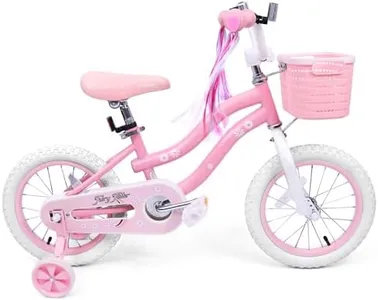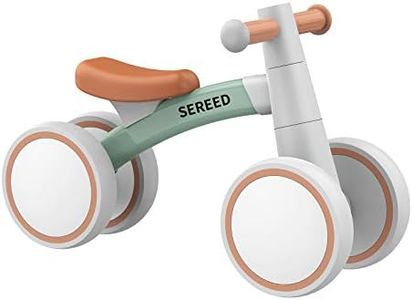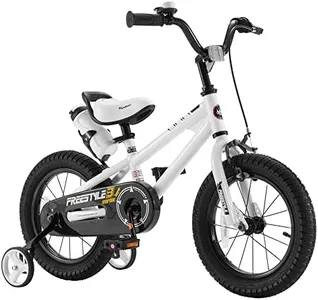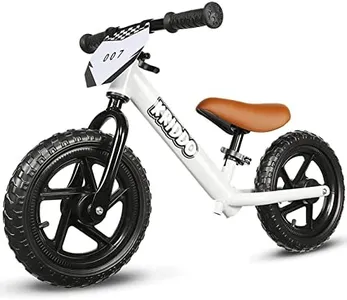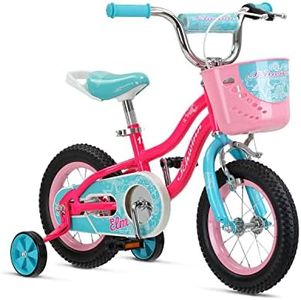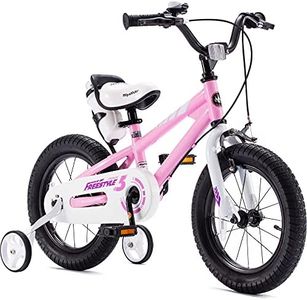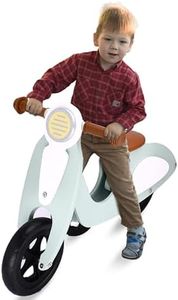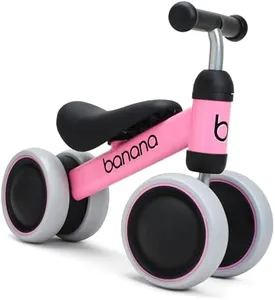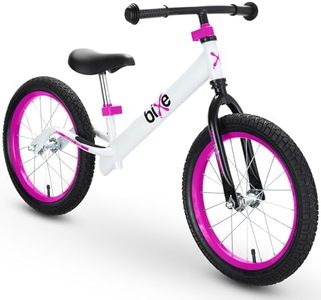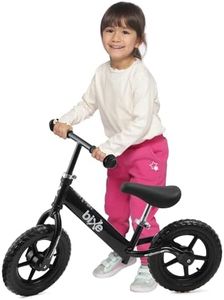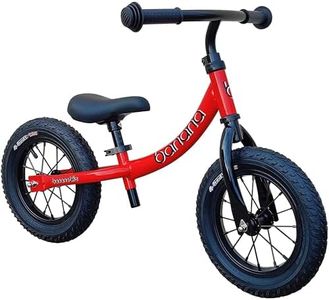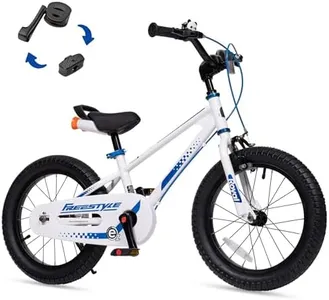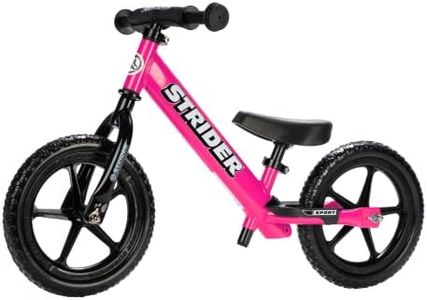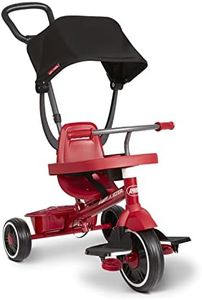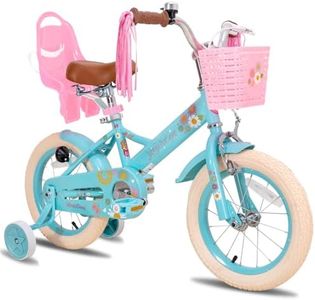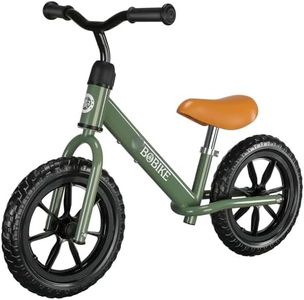10 Best Toddler Bikes 2025 in the United States
Our technology thoroughly searches through the online shopping world, reviewing hundreds of sites. We then process and analyze this information, updating in real-time to bring you the latest top-rated products. This way, you always get the best and most current options available.

Our Top Picks
Winner
SEREED Baby Balance Bike for 1-2 Year Olds - 4 Wheels, First Bike for Toddlers, Birthday Gift (Green)
Most important from
10837 reviews
The SEREED Baby Balance Bike is designed for toddlers aged 1 to 2 years, making it an excellent choice for little ones just starting to explore the world of riding. One of its standout features is its lightweight construction, weighing only 1.6 kg (3.6 pounds), which makes it easy for both parents and toddlers to carry around. The sturdy aluminum alloy frame ensures durability, while the non-slip wheels allow for safe use both indoors and outdoors.
A significant strength of this balance bike is its focus on safety. It has a closed wheel design that prevents pinching and includes a 135° turning limit to help avoid falls. This is crucial for young riders who are still mastering their balance and coordination.
Another highlight is the bike’s design. It offers a supportive seat and non-slip handle, contributing to a comfortable riding experience. The absence of pedals encourages toddlers to push themselves along, which is perfect for developing their balance and steering skills. However, there are a couple of drawbacks worth noting. The bike does not come with brakes, which might be a point of concern for some parents, especially if the child is riding on steeper surfaces. Furthermore, the bike size is relatively small, which might limit its use as toddlers grow older, as it can accommodate a maximum weight of 55 pounds. Lastly, the assembly is required, and while it’s not overly complicated, it may take a bit of time, which could be challenging for busy parents.
Most important from
10837 reviews
RoyalBaby Freestyle Kids Bike 14 Inch Childrens Bicycle with Training Wheels Toddlers Boys Girls Beginners Ages 3-5 Years, White
Most important from
17699 reviews
The RoyalBaby Freestyle Kids Bike is a 14-inch bicycle designed for toddlers aged 3-5 years. Its sporty BMX-inspired design appeals to young children, making it stylish and fun. The bike comes equipped with training wheels, making it easier for beginners to balance and learn to pedal. The adjustable seat and handlebar ensure that the bike can grow with your child, offering extended usability.
Safety is a top priority, with features like sturdy steel frames, 2.4-inch wide tires, and efficient short travel distance grips for better braking. The bike also includes both a handbrake and a coaster brake, providing multiple braking options for added safety. The assembly process is straightforward, with 95% of the bike pre-assembled and clear instructions included. This can save parents time and effort.
Additionally, the bike comes with extra components like a water bottle, bell, and reflectors, enhancing the riding experience. While the bike is a bit heavier at 22 pounds, it is constructed from durable carbon steel, making it robust and reliable. Trusted by many families globally and compliant with CPSC standards, it delivers on safety and reliability. The limited warranty might be a consideration for some, as it covers only the bike frames and front forks for a lifetime, and other parts for six months. With a high customer rating of 4.5 out of 5 stars, the RoyalBaby Freestyle Kids Bike is a solid choice for young children learning to ride.
Most important from
17699 reviews
KRIDDO Toddler Balance Bike 2 Year Old, Age 18 Months to 5 Years Old, 12 Inch Push Bicycle with Customize Plate (3 Sets of Stickers Included), Steady Balancing, Gift Bike for 2-3 Boys Girls, WH
Most important from
3565 reviews
The KRIDDO Toddler Balance Bike is designed for children aged 18 months to 5 years, making it a versatile option for growing kids. Its 12-inch wheel size is appropriate for toddlers and ensures stability. The bike's lightweight design, with a package weight of just 3.5 kilograms, makes it easy for young children to maneuver. The carbon steel frame adds durability, supporting up to 110 pounds, which means it can withstand rough usage by enthusiastic toddlers.
The bike does not come with traditional brakes, relying on the child's feet for stopping, which might be a concern for some parents looking for added safety measures. The adjustable handlebars and seat accommodate growing children, ensuring prolonged use. The bike also includes a customizable plate with stickers, which adds a fun, personalized touch for kids.
While the bike lacks training wheels, its design focuses on helping toddlers develop balance and coordination early on. Enhanced safety features like rubber grip handlebars and a soft PU seat provide comfort and security. The extra-thick, all-terrain tires are puncture-resistant and ensure a smooth ride on various surfaces. Assembly is required, but the included tool kit simplifies the process. This bike is ideal for parents who want to introduce their toddlers to cycling in a safe, enjoyable manner and focus on developing their balance and coordination skills.
Most important from
3565 reviews
Buying Guide for the Best Toddler Bikes
Choosing the right bike for your toddler can be a fun and rewarding experience. The right bike can help your child develop balance, coordination, and confidence. When selecting a toddler bike, it's important to consider several key specifications to ensure the bike is safe, comfortable, and suitable for your child's age and abilities. Here are some important factors to consider when choosing a toddler bike.FAQ
Most Popular Categories Right Now
